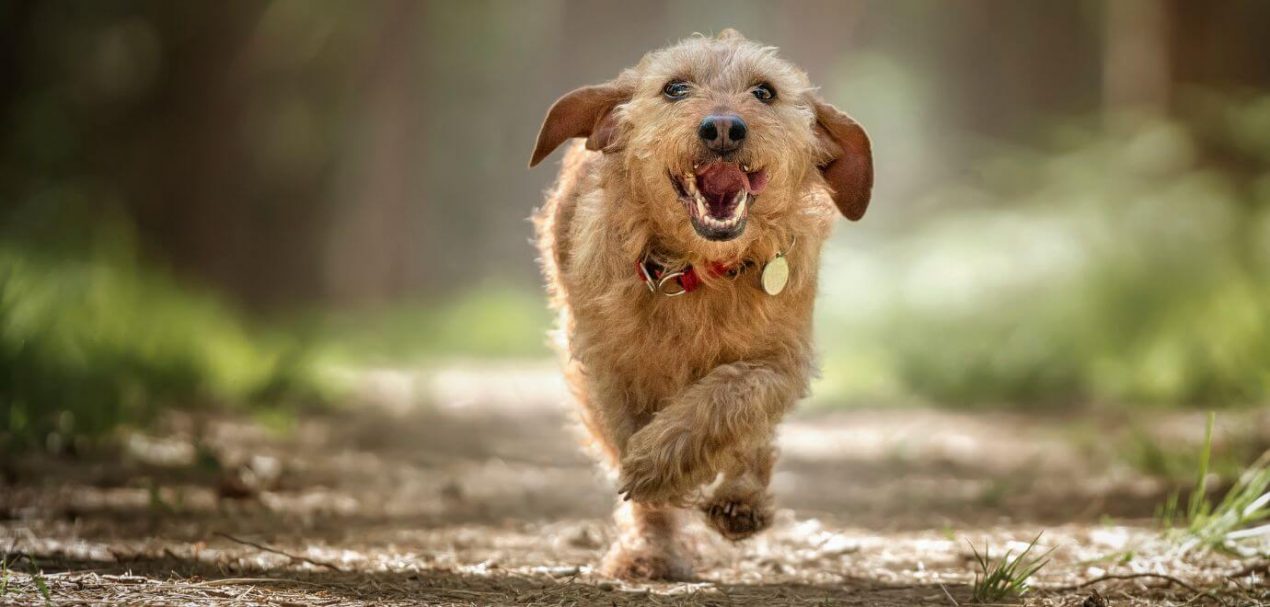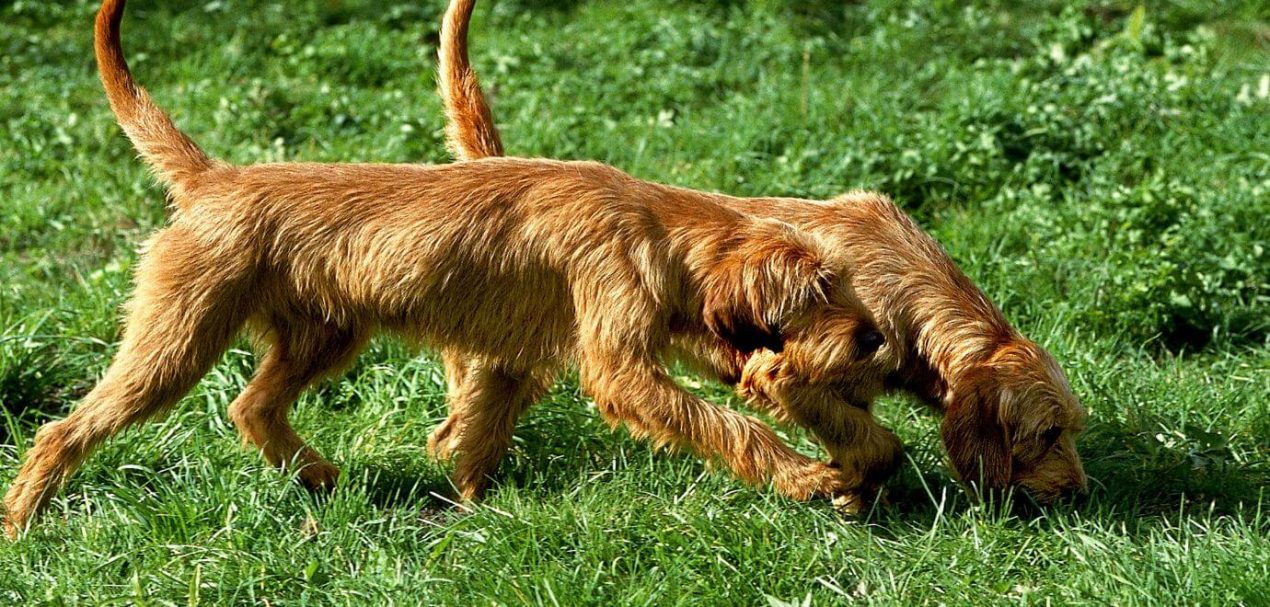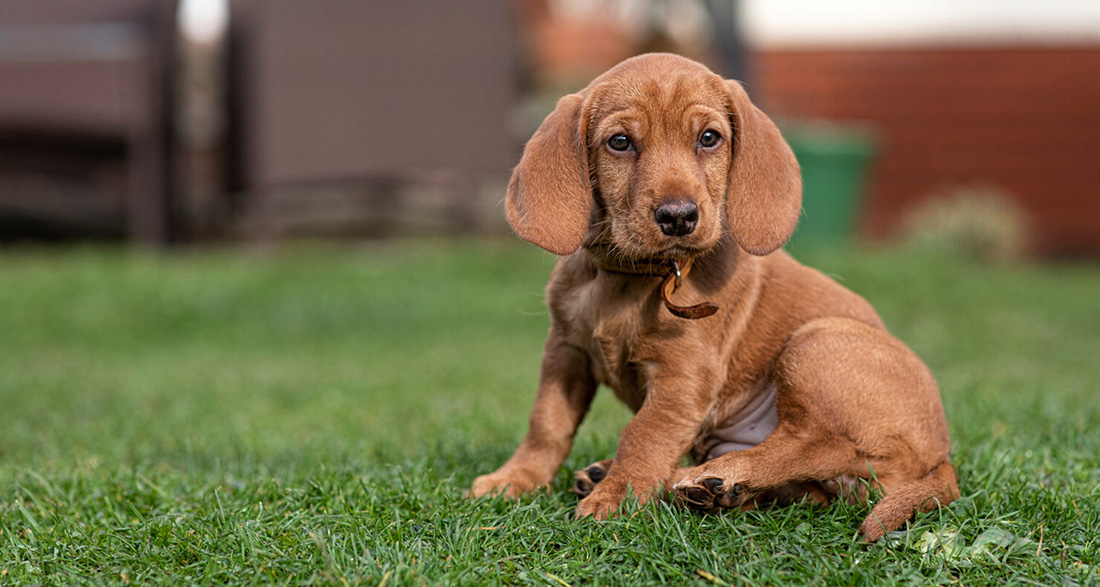The Basset Fauve de Bretagne, a captivating hound from the picturesque Brittany region of France, stands out alongside its English relative, the short-legged Basset Hound. Both known for their droopy ears and their role in hunting, they have their own impressive breed history. This article not only sheds light on these two breeds but also takes a look at the Entlebucher Mountain Dog from Switzerland. Dive into the breed encyclopedia with us and discover the essence, character, and many more aspects of these remarkable breeds.
- History of the Basset Fauve de Bretagne
- Appearance of the Basset Fauve de Bretagne
- Nature and Character
- Acquiring a Basset Fauve de Bretagne
- Puppy Development and Training
- How to Care for a Basset Fauve de Bretagne?
- Activities with the Basset Fauve de Bretagne
- Grooming a Basset Fauve de Bretagne
- Health and Genetic Diseases
History of the Basset Fauve de Bretagne
The Basset Fauve de Bretagne is a short-legged hunting dog of the scent hound type, originally hailing from Brittany, a historical region of France. This dog was developed in France as a hunting dog from the larger Grand Fauve de Bretagne, a breed that is now extinct. In fact, the Basset Fauve de Bretagne is an ancient French hound that can be traced back to the 1500s when François I had a pack of Breton dogs with which he regularly hunted.
The correct color for a Basset Fauve ranges from fawn to red but should be uniform with darker-colored ears. Structurally, the Basset Fauve de Bretagne resembles the Basset Hound from England but is overall lighter and has longer legs. Due to the historically controversial practice of registering mixed litters of Griffon and Basset Fauves, a litter of Bassets may sometimes produce dogs with longer legs.
There were rumors that the Basset Fauve de Bretagne was nearly extinct after World War II. Allegedly, the breed was then reconstituted by crossing the remaining specimens of the breed with rough-haired Dachshunds. However, the French club denies this, stating that the numbers of the Basset Fauve were never that low.
Breed Overview
GROUP: Hound
HEIGHT: 12.5-15.5 inches
WEIGHT: 23-39 pounds
COAT: Medium double coat, wiry
COAT COLOR: Fawn, Red Wheaten, Wheaten
LIFE SPAN: 13 to 16 years
TEMPERAMENT: Intelligent, active, energetic
HYPOALLERGENIC: No
ORIGIN: France
Appearance of the Basset Fauve de Bretagne
When you think of a Basset Fauve de Bretagne, imagine a smaller scent hound that is similarly built to the Basset Hound from England but is overall lighter and has longer legs. Typical of this breed is the Basset shape: a long body with short legs and a moderately rounded ribcage. The back is relatively short, broad, strong, and straight for a Basset. The loin area appears wide and muscular, with little lift. Its medium-length tail is strong at the base and tapers to a point.
The coat of the Basset Fauve de Bretagne is a distinctive feature. It is dense, wiry, and very rough. The coat color varies from golden wheaten to brick red. Importantly, the color ranges from fawn to red and is always uniform, with darker ears. With a size of 32-38 cm, this dog weighs between 16-18 kg.
Nature and Character
The Basset Fauve de Bretagne is distinguished by its friendly, lively, and devoted nature. Let’s take a closer look at some characteristics of its personality and behavior:
This dog from France is a passionate hunting dog with a pronounced hunting instinct. However, it always shows loyalty and devotion to its family, making it an excellent companion. Always ready for action, the Basset Fauve de Bretagne is brave and energetic.
It also excels within the family. With its intelligence, playful nature, and friendliness, it’s the ideal family pet. Its patience and gentleness with children are particularly noteworthy. Overall, it exhibits good social behavior and, with proper socialization and training, can get along without behavioral issues.
Finally, it’s important to note that this hound is very sociable. It gets along well with other dogs and pets, making household cohabitation easier.
| Affection Level | Medium |
| Friendliness | High |
| Kid-Friendly | High |
| Pet-Friendly | High |
| Exercise Needs | Medium |
| Playfulness | Medium |
| Energy Level | High |
| Trainability | Low |
| Intelligence | High |
| Tendency to Bark | Medium |
| Amount of Shedding | Medium |

Acquiring a Basset Fauve de Bretagne
Before deciding on a Basset Fauve de Bretagne, there are several things to consider:
It’s a passionate hunting dog with a strong hunting instinct. It’s essential to provide it with sufficient exercise and mental stimulation to keep it happy and healthy. This dog from France is also known for its loyalty and dedication to its family, always ready for action.
For allergy sufferers, the Basset Fauve de Bretagne may not be the best choice. And when considering the cost of acquisition, the price for a puppy of this breed is approximately $600 to $700.
Puppy Development and Training
Socialization is crucial for a Basset Fauve de Bretagne puppy to develop into a well-adjusted adult dog. Let your puppy meet different people, animals, and environments to make it feel comfortable and secure in various situations.
Puppies of this breed have lots of energy and need regular exercise to stay healthy and happy. Give your puppy plenty of opportunities to run, play, and explore.
The personality and character traits of the puppies are friendly and sociable. This makes them ideal for character development programs. Consider enrolling your puppy in a program that promotes school spirit, unity, and friendship, encouraging them to take on leadership roles.
Proper Training:
- Start early: The ideal time to start training your Basset Fauve de Bretagne is between 6 and 8 weeks when they are particularly eager to please their owners. Begin with basic obedience and then progress to advanced exercises.
- Short training sessions: Basset Fauve de Bretagne puppies have short attention spans. Therefore, training sessions should be short and concise, such as 10 minutes, three times a day.
- Use positive reinforcement: Puppies of this breed respond well to positive reinforcement methods like treats, praise, and playtime.
- Maintain consistency: Consistency is key in training. Always use the same commands and techniques when training your puppy.
- Adequate exercise: Puppies of this breed require regular exercise. Give your puppy plenty of opportunities to run, play, and explore.
- Be patient: Sometimes Basset Fauve de Bretagne puppies can be stubborn. It’s important to be patient and consistent in training.
How to Care for a Basset Fauve de Bretagne?
The Basset Fauve de Bretagne is a small breed that can adapt to various living conditions, including apartments, as long as they get enough exercise and mental stimulation. Despite their size, they need sufficient space to move and play. An enclosed garden or a nearby park would be ideal.
Basset Fauve de Bretagne puppies are full of energy and need regular exercise to stay healthy and happy. At least two brisk walks daily and plenty of opportunities to run, play, and explore are necessary.
Is the Basset Fauve de Bretagne Suitable for Me?
The Basset Fauve de Bretagne is ideal for singles, families, and retirees who have enough time and energy to provide them with the necessary exercise, training, and attention they require.
Activities with the Basset Fauve de Bretagne
The Basset Fauve de Bretagne is an energetic breed that requires regular exercise and mental stimulation. These hounds need at least two brisk walks daily to stay healthy and content. They love to explore new places and sniff around, so take them to different locations to keep their interest alive.
These hunting dogs from France, specifically from Brittany, enjoy being outdoors and exploring new areas. A trip to a nearby park or nature reserve gives them the chance to stretch their legs and enjoy the fresh air.
Their scenting abilities are impressive. You can train your dog to use its sense of smell to find hidden objects or treats. This not only provides great mental stimulation for the dog but also offers a fun activity for both of you to enjoy together.
As an intelligent breed, the Basset Fauve de Bretagne responds particularly well to positive reinforcement training. Basic obedience commands like “sit,” “stay,” “come,” and “heel” are easy to teach and help strengthen the bond between you.
Even though they have short legs, they can excel in agility training. Setting up an obstacle course in your backyard or taking them to an agility class can improve their agility and coordination.

Grooming a Basset Fauve de Bretagne
The Basset Fauve de Bretagne has a dense, wiry coat that requires regular grooming to keep it in good condition. Brush your dog’s coat regularly and bathe them as needed. It’s also important to trim their nails, clean their ears, and brush their teeth regularly.
How to Feed a Basset Fauve de Bretagne:
- Balanced diet: The Basset Fauve de Bretagne needs a balanced diet that meets its nutritional needs. Give them high-quality dog food appropriate for their age, size, and activity level. Fresh fruits and vegetables can also be included in their diet.
- Portion control: Be careful, as they tend to become obese. Therefore, it’s important to control their portions and not overfeed them. Follow the feeding recommendations on the dog food packaging and adjust the portions based on your dog’s activity level and weight.
- Meal frequency: A Basset Fauve de Bretagne should be fed twice a day. This helps prevent digestive issues and ensures they remain satisfied throughout the day.
- Treats: This dog loves treats, but they should be given in moderation. Use them as rewards during training and choose healthy options like small pieces of cooked chicken or vegetables.
- Water: Make sure your Basset Fauve de Bretagne has access to clean and fresh water at all times. Regularly change their water bowl.
Health and Genetic Diseases
- Reproductive issues: The Basset Fauve de Bretagne is prone to reproductive problems. A known issue is cryptorchidism, where one or both testicles fail to descend into the scrotum.
- Ear infections: Due to its long, floppy ears, the Basset Fauve de Bretagne can accumulate moisture and dirt in the ears, leading to ear infections.
- Eye problems: Be aware that the Basset Fauve de Bretagne is susceptible to eye problems, including corneal ulcers and cataracts.
- Heart problems: Unfortunately, this breed is also prone to heart issues such as mitral valve disease.
- Kidney problems: Another health concern is kidney problems, as they may suffer from renal dysplasia.
- Epilepsy: Some lines of the Basset Fauve de Bretagne are prone to epilepsy, so be vigilant and watch for signs.
Among all these health concerns, always ensure to schedule regular veterinary visits and monitor your dog’s health and life expectancy.
Conclusion
The diversity of dog breeds, from the Basset Fauve de Bretagne to the Entlebucher Sennenhund, is impressive. Each breed has its uniqueness and history. This article provided insight into their specifics and needs. If you are considering adding such a dog to your family, informed knowledge is crucial. Always consider making an informed choice for an enriching animal partnership.


